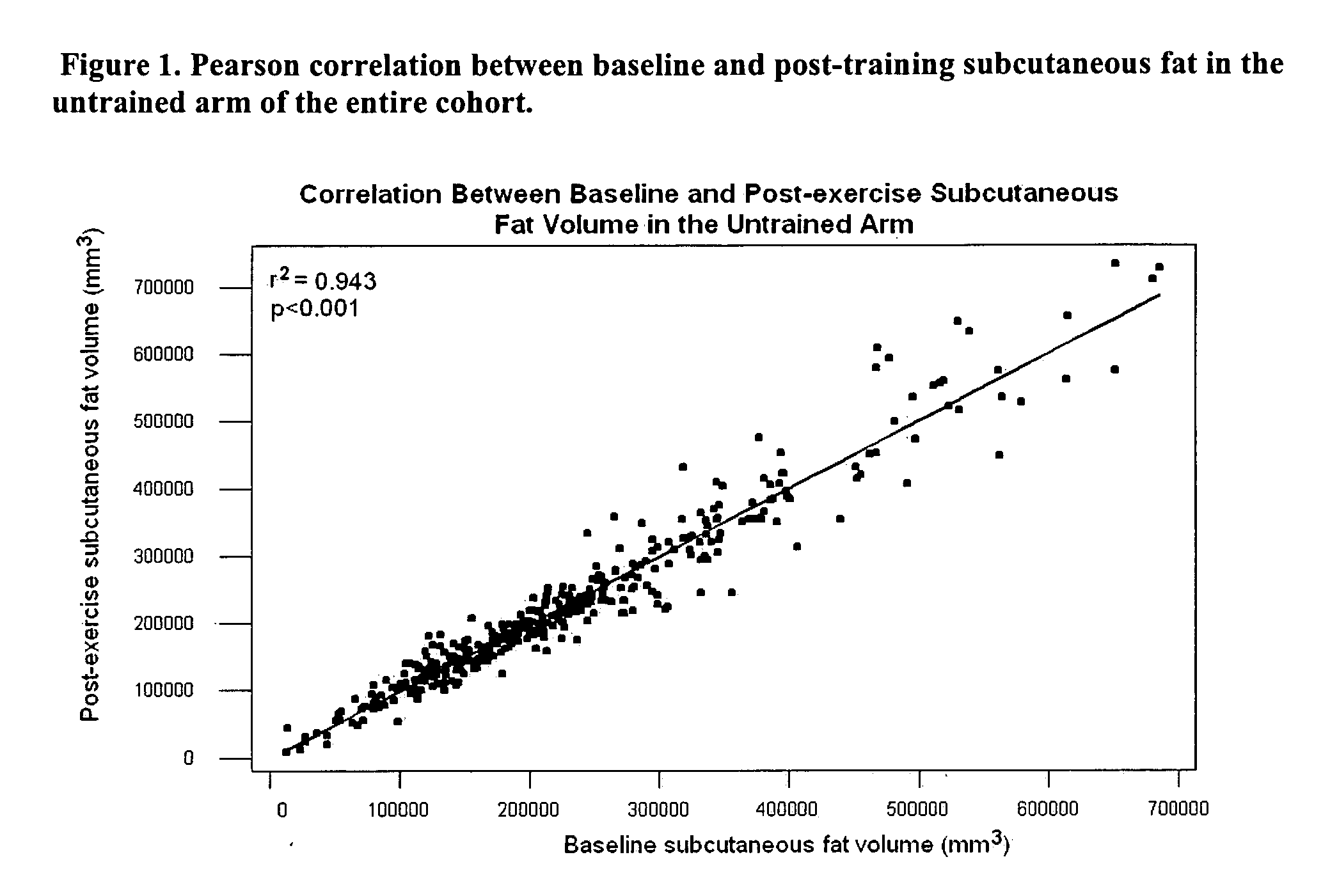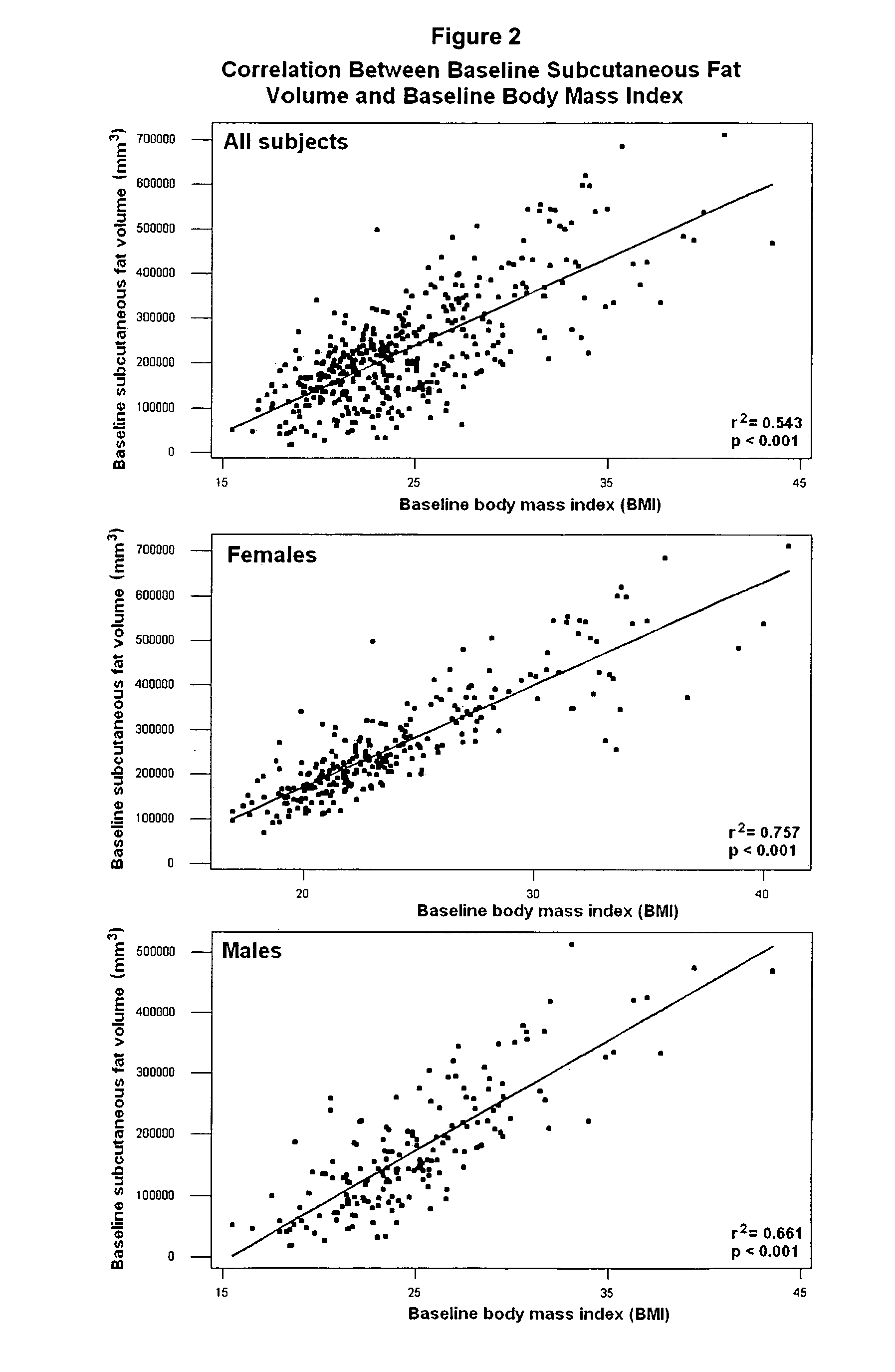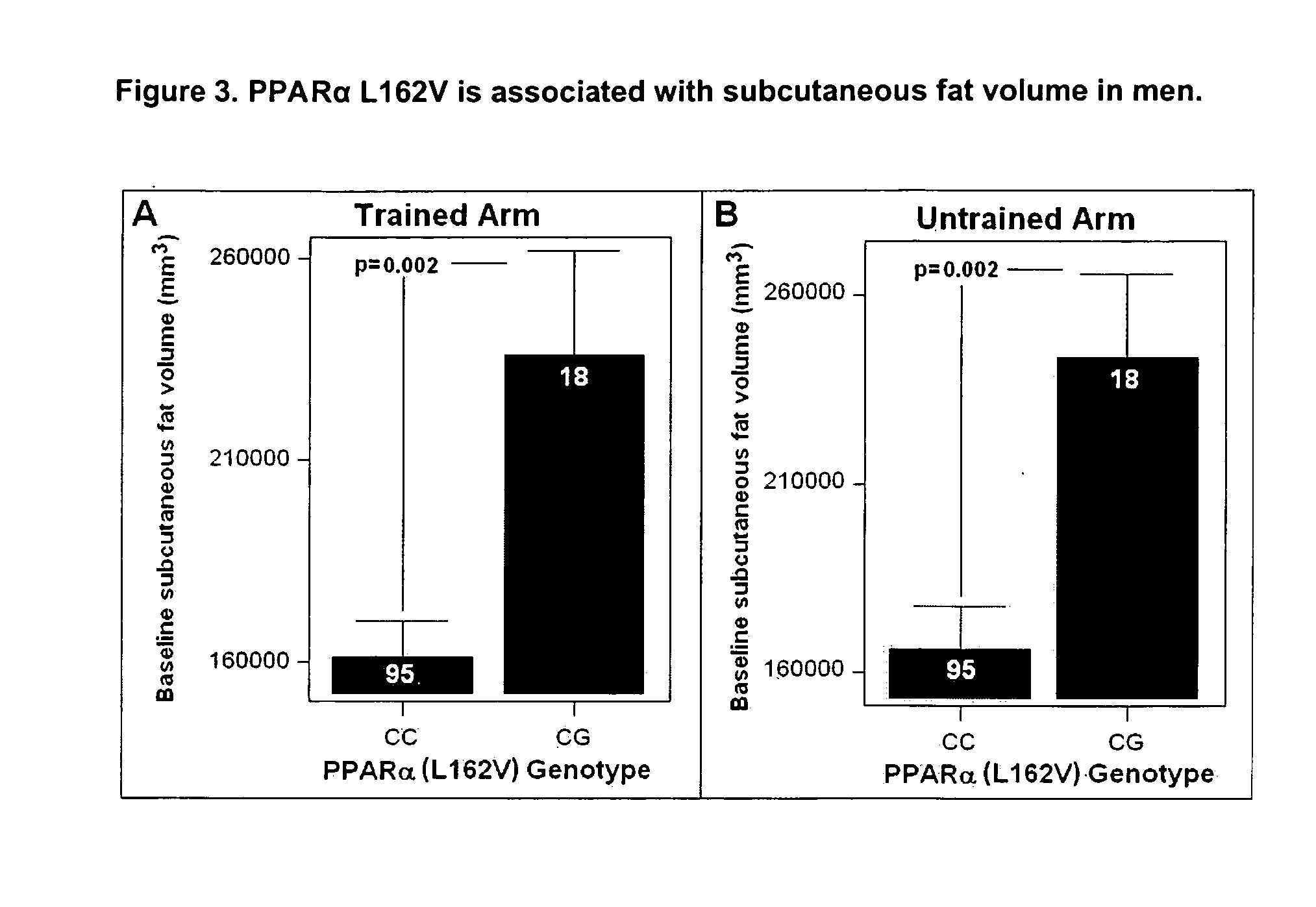Quantitative trait locus prognostic for changes in regional adiposity and BMI in Caucasian males
a quantitative and quantitative technology, applied in the field of genetic associations of adiposity in humans, can solve the problems of uncontrollable confounding variables, adiposity in an aged or type 2 diabetes population may be more subject to uncontrolled confounding variables, and the genetic underpinnings of adiposity are undoubtedly highly complex, so as to increase the likelihood of developing diseases, increase the regional fat and bmi, and reduce the expectation
- Summary
- Abstract
- Description
- Claims
- Application Information
AI Technical Summary
Benefits of technology
Problems solved by technology
Method used
Image
Examples
example 1
Material and Methods
[0020] Study overview and subjects: The Functional Single Nucleotide Polymorphism Associated with Human Muscle Size and Strength or FAMuSS is a multicenter, NIH funded study designed to identify genetic factors that dictate baseline bone, muscle and fat volume and the variability in response to exercise training. The study design protocol has been described in detail elsewhere (Thompson P D et al., above), and preliminary reports of genetic associations with muscle strength and size have been reported (Hubal M J et al. Med Sci Sports Sci. 2005 6:964; Gordon E S et al. Eur J Hum Genet. 2005 9:1047; Clarkson P M et al. J appl. Physiol. 2005 99(1):154). Briefly, 945 men and women, average age 24 (range 18-40 yrs) were recruited by one of the 8 centers (University of Massachusetts Amherst, University of Connecticut, Dublin University (Ireland), Florida Atlantic University, Hartford Hospital, University of Central Florida, West Virginia University, Central Michigan U...
example 2
Subcutaneous Fat Volume in 440 Young Adult Volunteers
[0032] We recruited 945 subjects into a phenotyping and unilateral arm resistance training intervention (“FAMuSS” cohort). Eight sites participated in the study, and all data was entered remotely via a web SQL study database maintained at Children's National Medical Center. Of the 945 initially enrolled, 797 completed initial DNA sampling and phenotyping, and allele frequencies are based on this subset (n=797). 440 subjects completed the intervention and had completed volumetric MRI quantitative measures, and genotype×phenotype associations are based upon this subset (n=440) (Table 1).
TABLE 1Demographic characteristics of the study population.CharacteristicFemales (N = 267)Males (N = 173)N (%)N (%)EthnicityAfrican-American14 (82.4%) 3 (17.6%)Asian20 (40.8%)29 (59.2%)Caucasian210 (63.4%) 121 (36.6%) Hispanic15 (65.2%) 8 (34.8%)Other 8 (40.0%)12 (60.0%)Mean ± SDMean ± SDAge (years)23.82 ± 5.92 25.49 ± 5.85 **Baseline body mass (l...
example 3
Genotype Associations with Subcutaneous Fat Volume for 15 Candidate Loci
[0037] To identify QTLs for regional subcutaneous fat, 13 polymorphisms in 9 candidate genes already known to be associated with some measure of body fatness were tested in our sample: ACE (I / D; rs17230355)(Strazzulo P et al. Ann Int Med 2003 138:17, AGRP (Ala67Thr; rs5030980)(Argyropolous G et al. J Clin Endo Metab 2002 87:4198), ADRβ1 (Gly389Arg; rs1801253)(Dionne M J et al. Int J Obes Relat. Metab Disord, 2002; 26:633), ADRβ2 (Arg16Gly; rs1042713)(Ishiyama-Shigemoto S et al. Diabetologia 199998); (Gln27Glu; rs1042714)(Meirhaeghe A et al. Int J Obes Rlat Metab Disord, 2000,3:382), ADRβ3 (Arg64Trp; rs4994)(Thomas G N et al. Int J Obes Relat Metab Disord. 2000. 23:545); LEPR (Q223R; rs1137101) (Yannakouris N et al. above); (K109R; rs1137100)(Chagnon Y C et al. above); (Pro1019Pro; rs1805096)(de Silva A M et al, above); (Lys656Asn; rs81179183 (Wauters M et al., above); PAI-1 (−675 4G / 5G; rs1799768)(Bouchard L et...
PUM
| Property | Measurement | Unit |
|---|---|---|
| volume | aaaaa | aaaaa |
| MRI | aaaaa | aaaaa |
| volumetric MRI | aaaaa | aaaaa |
Abstract
Description
Claims
Application Information
 Login to View More
Login to View More - R&D
- Intellectual Property
- Life Sciences
- Materials
- Tech Scout
- Unparalleled Data Quality
- Higher Quality Content
- 60% Fewer Hallucinations
Browse by: Latest US Patents, China's latest patents, Technical Efficacy Thesaurus, Application Domain, Technology Topic, Popular Technical Reports.
© 2025 PatSnap. All rights reserved.Legal|Privacy policy|Modern Slavery Act Transparency Statement|Sitemap|About US| Contact US: help@patsnap.com



